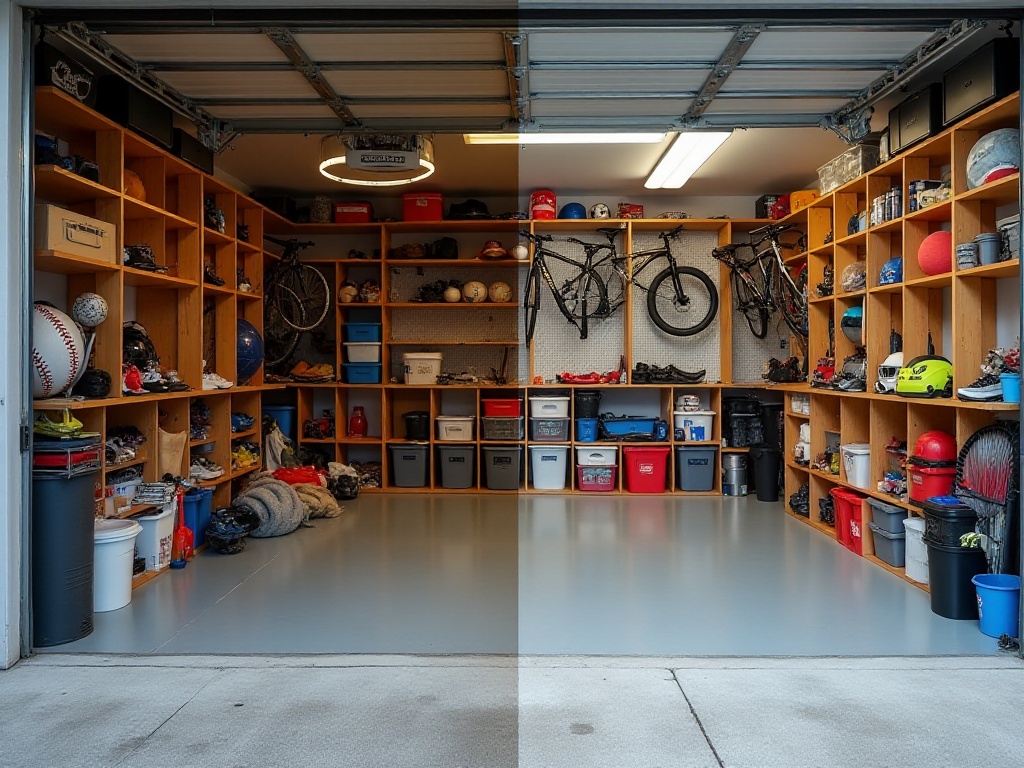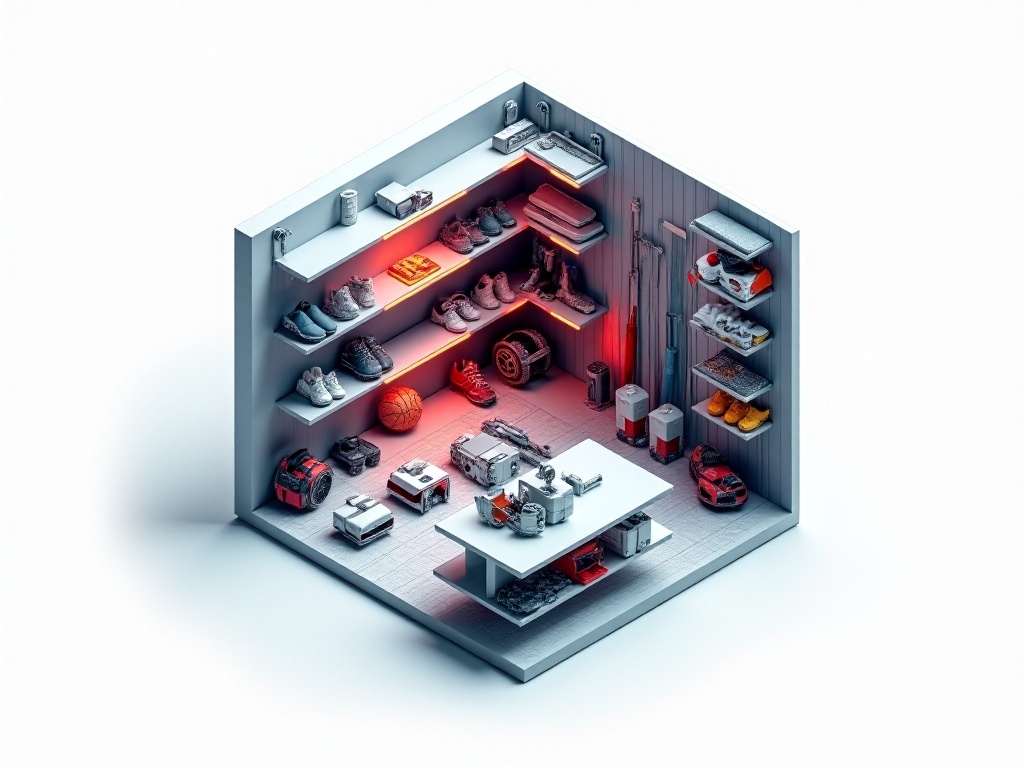Introduction
During my years managing a gym, equipment storage has been my biggest headache. Seeing equipment scattered across our large space not only created visual chaos but seriously impacted members' training experience. I vividly remember when a member once tripped over carelessly placed dumbbells. Though they weren't seriously injured, this incident was a wake-up call. I began to seriously consider how to master equipment storage.
After years of practice and continuous improvement, I finally developed a practical and efficient storage system. This system not only increased our gym's space utilization several times over but also earned high praise from members. Today, I want to share these years of experience with you, believing these methods are useful not just for gyms but for home storage as well.
Maximizing Wall Space
Wall storage has become one of our gym's most popular features. When I first took over this gym, the bare walls were just wasting space except for a few fitness posters. Seeing members' equipment randomly piled on the floor or stuffed in lockers made me think how much better it would be if we could properly utilize this vertical space.
After extensive market research and investigation, we finally designed a complete wall storage system. First, we chose special heavy-duty steel hooks - not ordinary small hooks, but specially processed thickened ones rated for over 50kg each. Better yet, these hooks come with anti-slip rubber covers that protect the walls from scratches and prevent harsh metal-on-metal sounds when accessing equipment.
We hired professional installers who precisely calculated the position and spacing of each hook based on different equipment sizes and weights. Now when you walk into our gym, you'll see training equipment neatly hanging on the wall: yoga mats arranged by color, jump ropes of different lengths clearly visible, and resistance bands of various strengths all properly organized. Members say this storage method not only makes access convenient but also lets them quickly find the equipment they need.
The success of this wall storage system made me realize this method could be adapted for home use. For instance, if you have sports-loving children, rather than letting their basketballs, soccer balls, and badminton rackets lie around, you could install similar hooks on their bedroom walls. This keeps rooms tidy while developing good organizational habits. Plus, when all sports equipment is neatly hung on the wall, it becomes an attractive display that can inspire children to exercise.
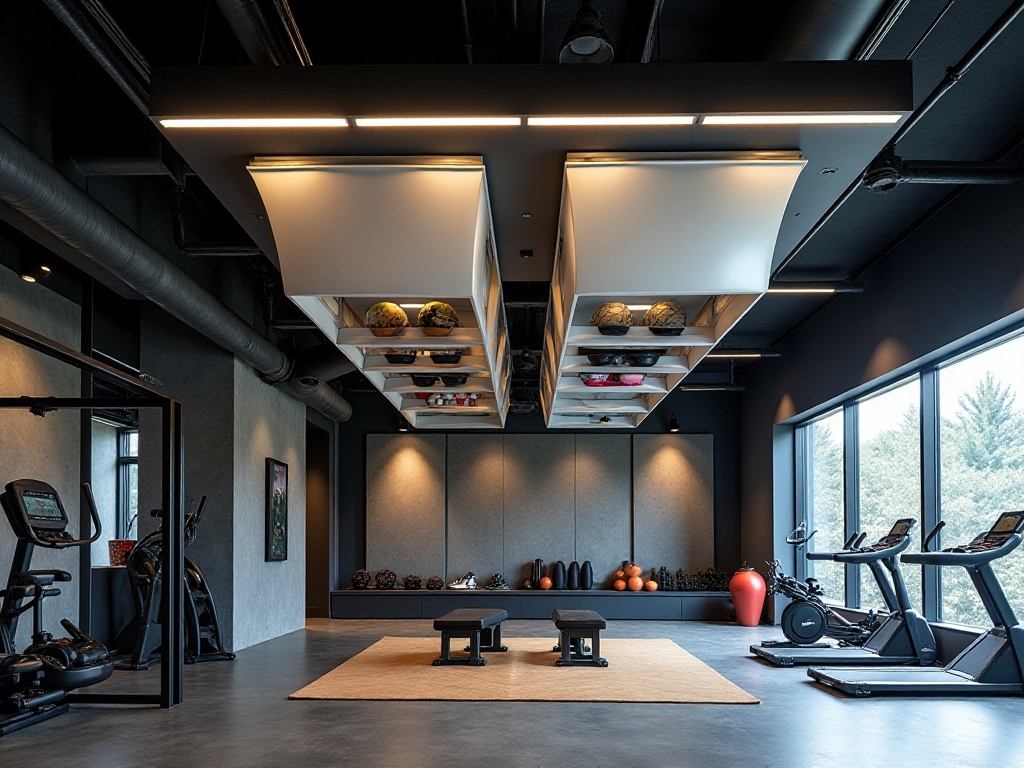
Clever Use of Ceiling Space
When it comes to storage, many people overlook overhead space. I first realized the importance of ceiling space during an unexpected discovery while studying abroad. It was at a high-end gym in Brisbane, Australia, where they had installed a complete track-based storage system under the ceiling, similar to luggage racks at train stations but more sophisticated and practical.
After returning home, I immediately began renovating our gym's ceiling space. We installed a custom sliding track storage box system below the ceiling. The system's biggest feature is its flexibility - each storage box is mounted on tracks, easily pulled down when needed and pushed back when done. We specifically chose transparent boxes so contents are visible from below.
This system is now mainly used for seasonal equipment and backup supplies. For example, yoga mats that are popular in summer see less use in winter and can be stored in ceiling boxes. Other spare small equipment like dumbbell pads and non-slip mats that aren't frequently used are stored above. This not only keeps equipment dust-free but greatly saves floor space.
What I'm most proud of is how this ceiling storage system solved a long-standing problem: equipment moisture issues. In our city's particularly humid winters, equipment stored on the ground often developed mold. But since implementing the ceiling storage system, this problem has been completely resolved. With better air circulation plus moisture-absorbing packets in each storage box, equipment maintenance has notably improved.
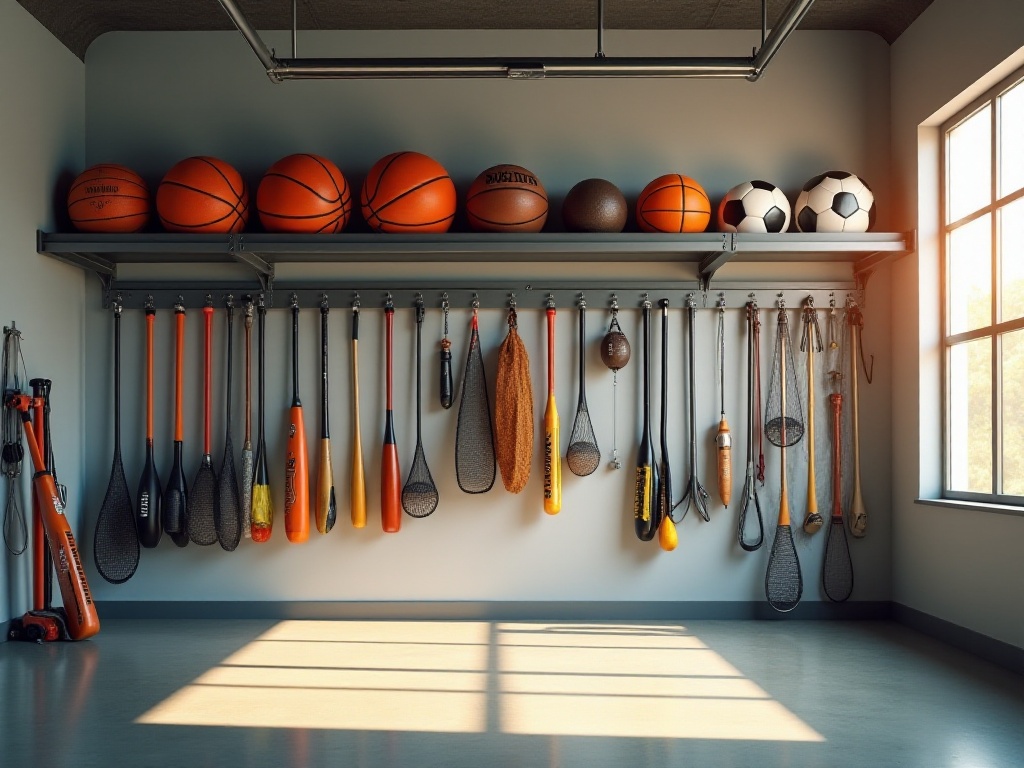
Mobile Storage Solutions
Speaking of mobile storage, this is one of our gym's proudest innovations. The inspiration came from an interesting source - watching a supermarket employee organizing goods with a shopping cart one day, I had a sudden revelation: why couldn't we store fitness equipment the same way?
So we began modifying standard aluminum trash bins. First, we installed high-quality caster wheels that are both durable and quiet. Then we added impact-resistant strips to prevent damage to other equipment or walls during movement. Finally, we applied special rust-resistant coating so sweat drips wouldn't cause corrosion.
These modified storage bins have become our gym's most popular "mobile equipment stations." They perfectly store round equipment like yoga balls and medicine balls, and are extremely easy to move around. Better yet, these storage bins can be freely combined as needed - just wheel over the bins with required equipment during training, then wheel them back when done. It couldn't be more convenient.
To make the storage system more scientific, we developed a color-coding system. Each storage bin is painted a different color: red for strength training equipment like dumbbells and kettlebells; blue for cardio equipment like jump ropes and resistance bands; yellow for core training equipment like yoga balls and balance boards. This classification system not only makes equipment management more standardized but helps members quickly find needed equipment.
Recently, we made another small improvement to this system. We added small display boards on the side of each storage bin showing basic usage instructions and precautions for the equipment in illustrated form. This not only improves members' usage efficiency but helps prevent damage or injury from improper use.
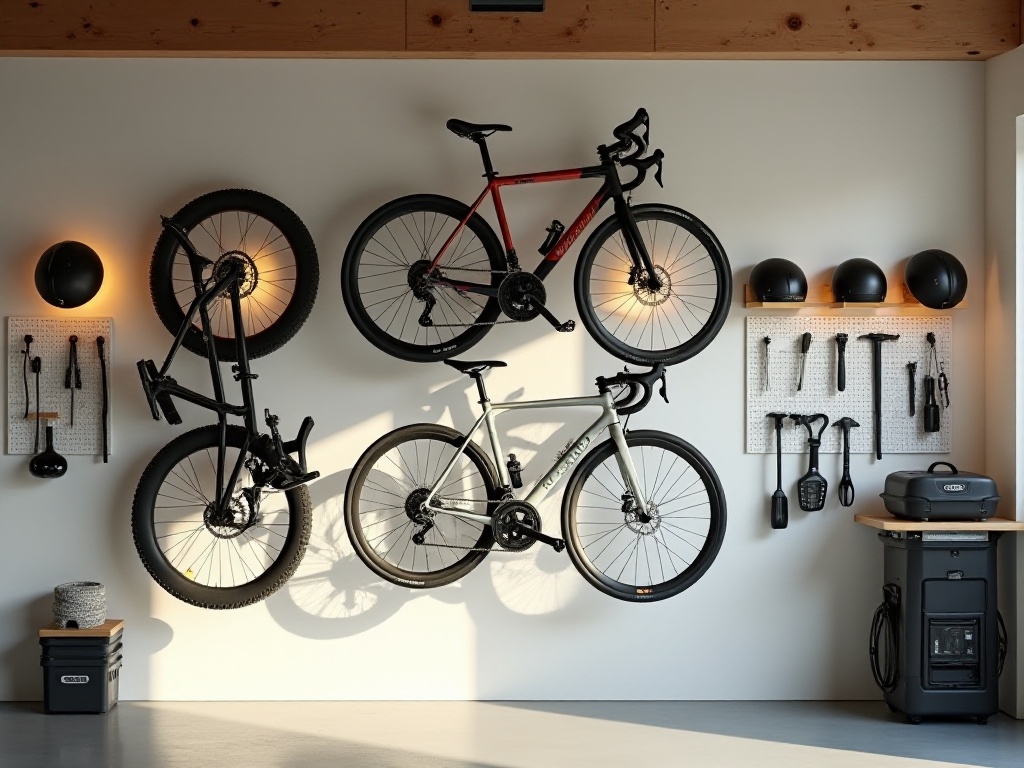
Proper Maintenance
Equipment management isn't just about neat arrangement. At our gym, equipment maintenance is a crucial daily task. This concept formed from a painful lesson. When I first took over the gym, poor daily maintenance led to severe rusting of an expensive treadmill's main shaft, resulting in thousands in repair costs. Since then, we've established a complete equipment maintenance system.
Now we schedule dedicated cleaning times each day. Before opening and after closing, staff thoroughly clean all equipment with professional disinfectant cleaners. Special attention is paid to areas frequently in contact with skin, like treadmill handrails, bike seats, and dumbbell grips, which are carefully wiped with gentle cleaners.
We've also developed specific maintenance plans based on different equipment characteristics. For instance, we regularly apply rust-preventive oil to iron equipment; use special leather conditioner on leather items; and schedule professional technicians to inspect and maintain equipment with electronic components.
To make maintenance more standardized, we created an equipment maintenance log system. Each piece of equipment has its own "file" recording purchase date, daily maintenance, repair records, and other information. This helps us not only detect problems early but prevent many potential malfunctions.

Special Care for Spin Bikes
In our gym, spin bikes are "star equipment." With many members attending spin classes daily, bike storage and maintenance became a crucial issue. After multiple improvements, we finally found the optimal solution.
First was the storage issue. Traditional horizontal storage took up too much space and made floor cleaning difficult. After market research, we found a specialized fitness equipment factory to custom-make vertical bike racks. These cleverly designed racks store spin bikes vertically, with each rack equipped with non-slip pads and securing devices to ensure stable storage.
This vertical storage method not only saves significant space but facilitates bike maintenance. Now we can store nearly twice as many spin bikes in the same space, allowing us to offer more group classes to meet increased member demand.
In the bike area, we also set up a dedicated repair tool section. This area's design is well-thought-out: tool racks are made of transparent acrylic for easy visibility; each tool has a fixed position and must be returned after use; commonly used tools like air pumps, wrenches, and Allen keys are available in multiple sets to avoid waiting when multiple people need them.
For member convenience, we placed an instruction board next to the tool area detailing simple adjustment methods like how to adjust seat height and resistance. This improves members' self-maintenance abilities while reducing equipment damage from improper operation.

Experience Summary
Years of management experience have taught me that a good storage system should have three core features: easy access, easy cleaning, and safety reliability. These three points seem simple but require long-term practice and continuous improvement to truly achieve.
Easy access means the storage system must follow ergonomic principles. When designing storage solutions, we pay special attention to equipment access heights. Frequently used equipment is stored at waist height for easiest access; heavier equipment slightly below waist height to safely leverage body strength; and lighter equipment can be stored higher.
Easy cleaning is particularly important for gyms. Our storage systems all leave appropriate space for cleaning tools to reach. For example, wall storage racks have space at top and bottom for easy dust removal; mobile storage bins with caster wheels can be moved to clean underneath.
Safety reliability is the fundamental requirement for storage systems. All storage facilities undergo professional safety assessments with regular checks of all connections and timely replacement of worn parts. Especially for suspended storage facilities, we only use safety-certified products and conduct regular load testing.
In practice, I've found planning storage based on usage frequency is most important. We classify equipment into three categories: daily use items in most accessible locations, occasionally used items in secondary positions, and rarely used items in more distant or higher locations. This classification saves space while improving work efficiency.
Finally, I want to emphasize that a good storage system should be dynamic, continuously adjusted and optimized based on actual usage. For example, we track equipment usage frequency monthly and adjust storage locations based on data; quarterly we collect member feedback and suggestions to identify potential improvements.
These storage experiences apply not just to gyms but offer valuable reference for home storage. If you have exercise equipment at home, try these methods. Remember, good storage not only saves space but more importantly makes life more convenient and comfortable.
How do you store exercise equipment at home? Do you have any unique good methods? Welcome to share your storage tips in the comments section, and let's explore together how to better utilize space.


